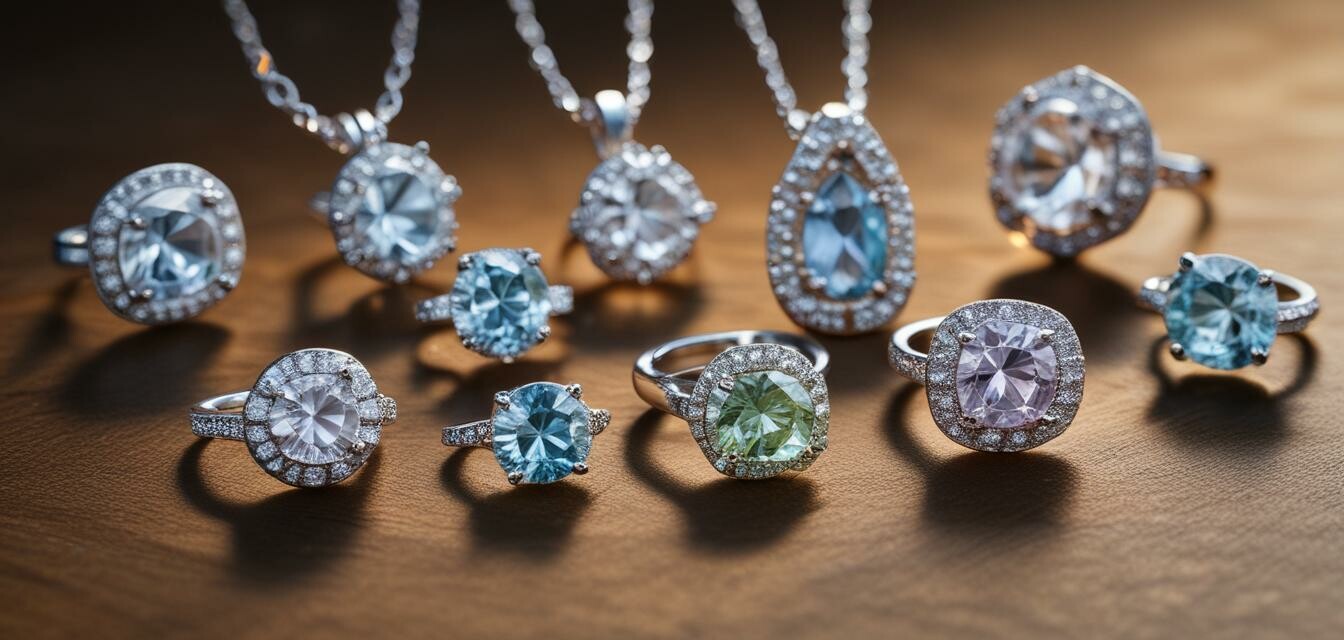
Sustainability in Moissanite: Leading the Way in Ethical Jewelry
Key Takeaways
- Colored moissanite is an ethical alternative to traditional gemstones.
- The production process of moissanite is more sustainable and environmentally friendly.
- Consumers are increasingly demanding transparency in jewelry sourcing.
- Moissanite jewelry offers the same brilliance as diamonds but with a lower environmental impact.
- The industry is rapidly evolving with innovative practices to promote sustainability.
As consumers grow increasingly conscious of their purchasing decisions, the jewelry industry is responding with a shift towards more sustainable practices. Among the leaders in this field is colored moissanite, which offers a responsible alternative to traditional gemstones. This article explores how colored moissanite is setting the standard for ethical jewelry and what that means for consumers.
The rise of ethical jewelry
In recent years, there has been a noticeable trend towards ethical jewelry choices. Consumers are educating themselves about the origins of their pieces, seeking options that do not contribute to environmental degradation or unethical labor practices. The demand for ethical jewelry has encouraged companies to innovate and adopt more sustainable practices in their production processes.
What is moissanite?
Moissanite is a gemstone that was originally discovered in a meteorite. Today, it is produced synthetically, making it an ethical and sustainable alternative to diamonds. It is known for its exceptional brilliance and fire, and colored moissanite takes that a step further by offering a variety of hues, allowing consumers to express their individuality.
How colored moissanite promotes sustainability
Colored moissanite is at the forefront of the sustainable jewelry movement for several reasons:
- Synthetic production: Unlike mined gemstones, which can involve destructive mining practices, moissanite is created in controlled laboratory environments, minimizing its environmental footprint.
- Traceable sourcing: The processes involved in creating moissanite are transparent, allowing consumers to verify the ethical standards of their purchases.
- Longevity: Moissanite is known for its durable properties, making it a long-lasting investment compared to traditional gemstones.
Comparative overview of moissanite vs. traditional gemstones
| Aspect | Moissanite | Traditional Gemstones |
|---|---|---|
| Sourcing | Synthetic - Ethical and traceable | Often mined - Can involve unethical practices |
| Environmental Impact | Low - Sustainable production | High - Deforestation and land destruction |
| Brilliance | Higher than diamond | Varies by gemstone |
| Cost | More affordable | Typically more expensive |
Consumer awareness and choice
As consumers become more informed about the implications of their purchases, they are making choices that align with their values. This shift has pressured companies to increase transparency regarding their products. Ethical certifications are becoming common, helping buyers identify truly sustainable options.
Trends in the jewelry market
Recent trends indicate a significant turn towards sustainability in the jewelry industry. Here are a few notable movements:
- Advancements in moissanite technology improving quality and variety.
- Partnerships between brands focused on sustainability and ethical practices.
- Consumer-driven demand for eco-friendly packaging and production methods.
Conclusion
The colored moissanite industry is not just keeping pace with the ethical jewelry movement; it is leading the way. Consumers looking for alternatives that align with their values can feel confident in choosing colored moissanite. As the market continues to evolve, it's clear that sustainability will be at the forefront of jewelry decisions.
Pros
- Ethically sourced and produced.
- Greater variety of colors compared to traditional gemstones.
- More affordable than diamonds.
- Environmentally friendly production processes.
Cons
- Some may still prefer natural gemstones over lab-created ones.
- Lack of recognition compared to traditional diamonds in certain markets.
Explore more about colored moissanite
For those interested in diving deeper into colored moissanite, check out our product categories:
- Colored Moissanite Rings
- Colored Moissanite Earrings
- Colored Moissanite Necklaces
- Colored Moissanite Bracelets
- Colored Moissanite Jewelry Sets
Stay updated with the latest news in the colored moissanite industry by visiting our News and Updates section. Join us in embracing sustainability in the world of luxury jewelry!

